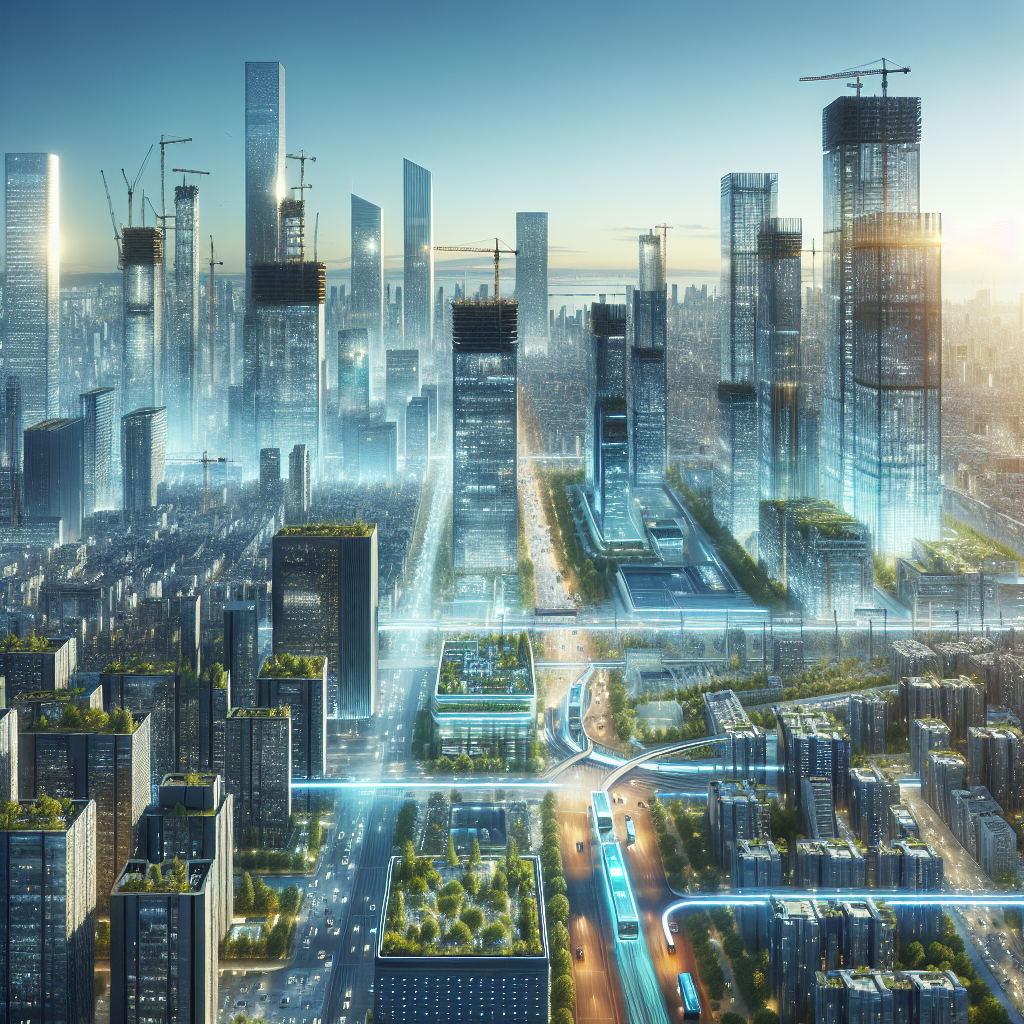Smart Cities: The Role of Construction in Urban Innovation
In the age of rapid urbanization and technological advancement, the concept of smart cities has emerged as a beacon of sustainable urban development. At the heart of this transformation lies the construction industry, playing a pivotal role in shaping the future of urban living. This article delves into the essence of smart cities and the indispensable role of construction in driving urban innovation.
Understanding Smart Cities
Smart cities leverage digital technology and intelligent design to enhance the quality of urban life, making it more sustainable, efficient, and livable. They incorporate advanced infrastructure, digital services, and IoT (Internet of Things) solutions to manage city assets, from traffic and transportation systems to water supply networks, waste management, and more. The goal is to create urban environments that promote economic growth, environmental sustainability, and a high quality of life.
The Role of Construction in Urban Innovation
The construction industry is at the forefront of building the physical and digital infrastructure that constitutes the backbone of smart cities. This section explores how construction drives urban innovation:
1. Infrastructure Development
The foundation of any smart city is its infrastructure. Innovative construction techniques are required to build efficient transportation systems, sustainable buildings, and resilient energy networks. Modern construction methods, such as modular construction and 3D printing, offer the potential to reduce waste, lower costs, and improve efficiency, making the development of smart city infrastructure more sustainable and innovative.
2. Integration of IoT and Digital Technologies
The integration of IoT devices and digital technologies into the built environment is essential for the functionality of smart cities. Construction plays a critical role in embedding sensors, smart meters, and other IoT devices into buildings and infrastructure. These technologies enable real-time data collection and analysis, allowing for more informed decision-making and the automation of various urban services.
3. Sustainability and Green Construction
Sustainability is at the core of smart cities, and the construction sector is instrumental in realizing this vision. Green construction practices, such as the use of renewable materials, energy-efficient designs, and the incorporation of green spaces, are vital for reducing the environmental footprint of urban areas. By prioritizing sustainability, construction can help create healthier, more livable cities.
4. Adaptability and Resilience
Smart cities must be adaptable to changing conditions and resilient to challenges such as climate change and natural disasters. Construction plays a key role in building adaptive infrastructure that can withstand extreme weather events and incorporating smart technologies that enable cities to quickly respond to emergencies.
5. Public-Private Partnerships (PPPs)
The development of smart cities requires significant investment and collaboration between the public and private sectors. PPPs in construction are crucial for financing and implementing large-scale urban projects. These partnerships can leverage the strengths of both sectors to accelerate innovation and ensure the successful deployment of smart city initiatives.
Challenges and Solutions
While the construction industry is essential for the development of smart cities, it faces several challenges, including regulatory hurdles, the need for skilled labor, and ensuring cybersecurity. Overcoming these challenges requires a coordinated effort from government, industry, and academia to foster innovation, develop standards and regulations, and invest in education and training.
FAQs
Q: What makes a city “smart”?
A: A smart city uses digital technology and intelligent design to improve the efficiency of urban operations, enhance the quality of life, and minimize environmental impact. It relies on data and analytics to manage resources and services effectively.
Q: How does construction contribute to the sustainability of smart cities?
A: Construction contributes to sustainability by using green building materials, incorporating energy-efficient designs, and integrating green spaces into urban areas. These practices help reduce the carbon footprint and promote environmental conservation.
Q: What are some innovative construction technologies used in smart cities?
A: Some innovative construction technologies include modular construction, 3D printing, the use of drones for surveying and inspections, and the integration of IoT devices for smart infrastructure.
Q: How can the construction industry overcome the challenges of building smart cities?
A: The construction industry can overcome challenges by embracing digital transformation, investing in training and development, fostering public-private partnerships, and working closely with regulatory bodies to streamline processes and adopt new standards.
Q: Can smart cities really improve the quality of life for their residents?
A: Yes, smart cities have the potential to significantly improve the quality of life by enhancing urban services, reducing traffic congestion, improving air quality, and providing more efficient and accessible public services.
Conclusion
The construction industry plays a critical role in the development of smart cities, driving urban innovation through the development of sustainable infrastructure, the integration of digital technologies, and the adoption of green construction practices. While challenges exist, the possibilities for creating more livable, efficient, and sustainable urban environments are immense. As cities continue to evolve, the construction sector will remain at the forefront of this transformation, shaping the future of urban living.

